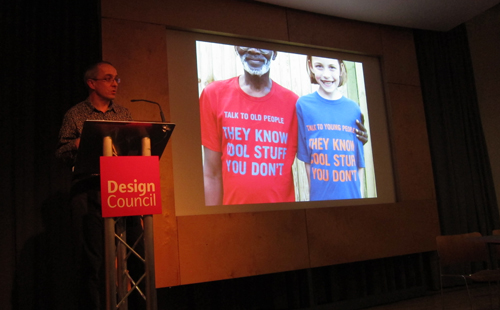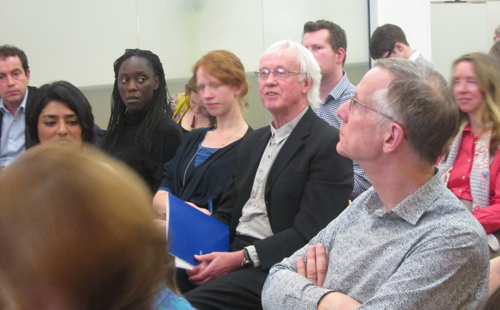Written by:
Our final Glass-House Debate of the 2011/2012 series was held earlier this week with our partner Design Council Cabe providing the venue for a discussion on the topic ‘Community Led Design: what is it and does it work?’. With four dynamic and diverse speakers and an engaged audience the evening took us through the many issues and perspectives involved in any community led process.
Dave Smith of London CITIZENS and East London Community Land Trust (ELCLT) outlined his concept of community led design which he summarised as creation (not placation), ownership and management. The priority of ELCLT is to provide affordable housing the residents of East London, a massive challenge in the context of a major global city. Agreeing with the difficulties faced by the ELCLT, property developer David Roberts of Igloo Regeneration injected what he declared was a “dose of realism” to proceedings, with the hypothesis that community led design is not viable. Roberts qualified this with an addendum that it cannot be a reality on publicly owned land in London because this is prime land that will always sell quickly (where there is a high return on investment with no long term approach).

Johanna Gibbons, a landscape architect who has long practiced deliberative planning in her work as part of the firm J & L Gibbons, gave numerous examples of green infrastructure projects she has been involved in where communities and their health and wellbeing have been at the heart of the whole process. As a key member of Southwark Council’s Planning Department, Alistair Huggett discussed some of the creative engagement techniques employed by planners, while acknowledging that their approach is largely community responsive design, as opposed to community led design.
Chair and Glass-House Chief Executive Sophia de Sousa was keen to explore the business case for community led design, questioning developer David Roberts and a developer audience member about why it makes good business sense for them to engage with communities in the design and planning process. David Roberts asserted that working with the community generates more value. Igloo Regeneration, according to David Roberts, takes a long term view of their investments and engaging with the community deals issues such as security concerns and identifies the right kind of development to carry out in the first place to ensure a sustainable, viable place emerges from the process.

The advent of Localism could not help but pervade the entire discussion with one audience member enquiring as to what each speaker hoped or desired from the Localism Act. Unsurprisingly, the issue of funding was raised as a key barrier to real community generated and community led processes. Johanna Gibbons pointed out that while new planning policy demands demonstrable community engagement there is no zone of funding allocated for this to occur, with Alistair giving the example of his own borough, where residents of Camberwell aspire to develop a neighbourhood plan but there are no funds available to support this. David Roberts also cautioned that community led design doesn’t fit the legal processes that we have at present in the UK.
Overall, the theory of Localism was welcomed but as one audience member affirmed, we will need a massive cultural change among local authorities, developers and communities that may take twenty years or more to occur. The following advice seems appropriate:
“As an organizer I start where the world is, as it is, not as I would like it to be. That we accept the world as it is does not in any sense weaken our desire to change it into what we believe it should be — it is necessary to begin where the world is if we are going to change it to what we think it should be.”
(From the book ‘Rules for Radicals’ by Saul Alinsky as quoted by Dave Smith)
Accepting our present reality, how can we collectively transform our future?
